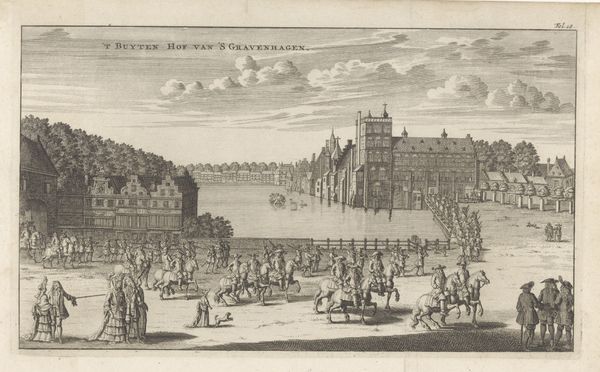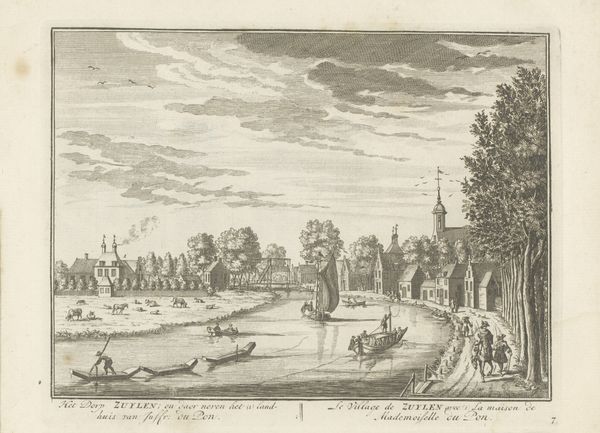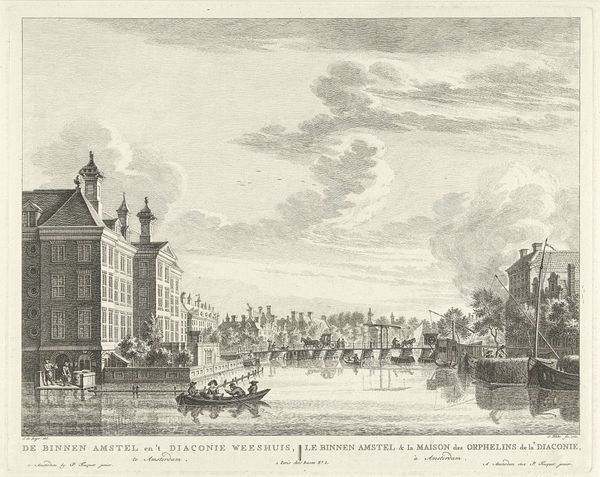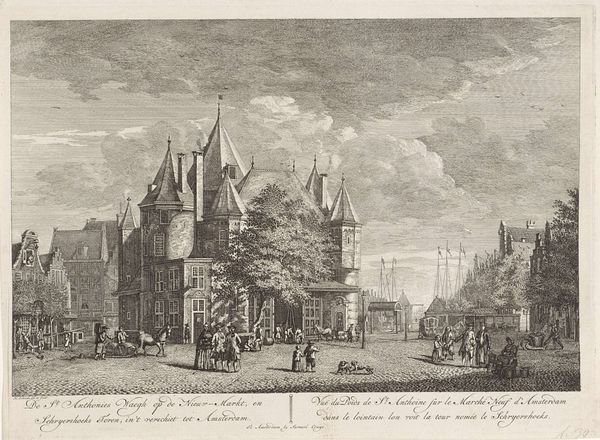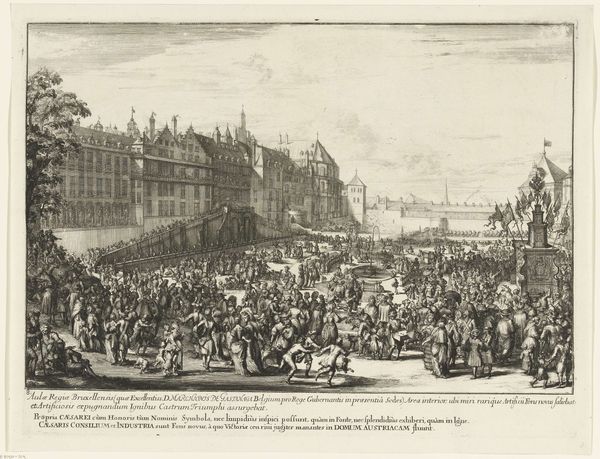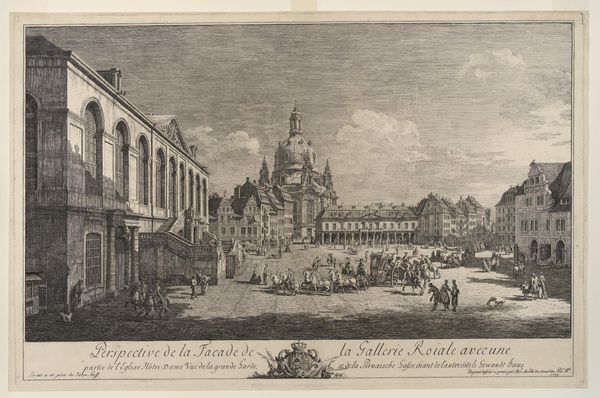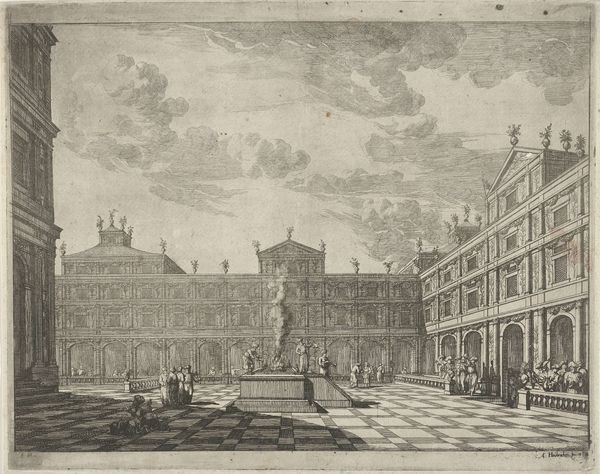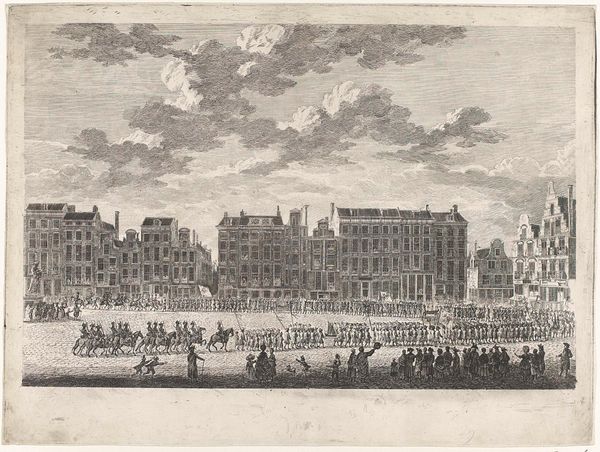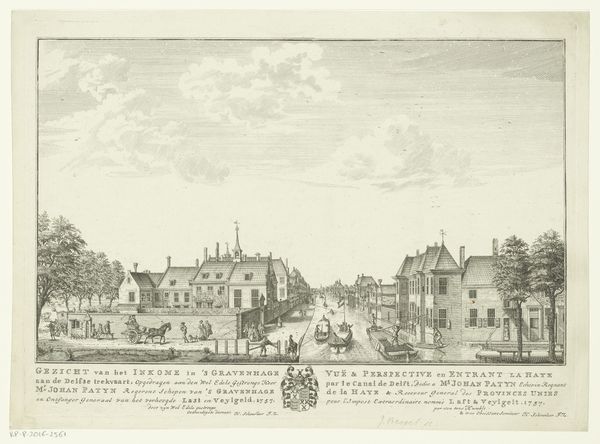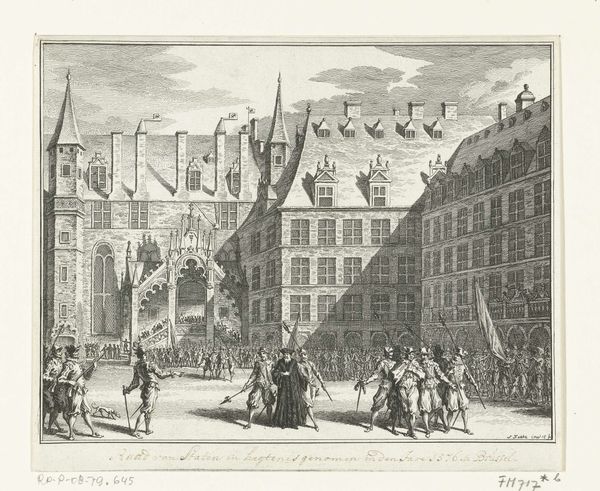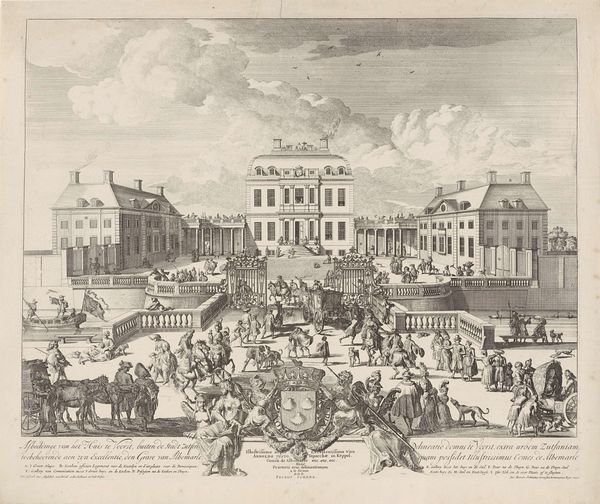
print, engraving
#
baroque
#
dutch-golden-age
# print
#
old engraving style
#
perspective
#
line
#
cityscape
#
engraving
#
realism
Dimensions: height 410 mm, width 473 mm
Copyright: Rijks Museum: Open Domain
Curator: Looking at this engraving, the rigid lines almost give the city an air of enforced order. It's as if the artist sought to control the visual experience with this extreme perspectival approach. Editor: Indeed. This is a work by Jan (II) Smit, dating roughly from 1741 to 1748. Its title translates from the Dutch as “View of the Flower Market and Pijpemarkt in Amsterdam.” Considering Amsterdam's powerful presence in the Dutch Golden Age, the piece shows a conscious focus on commerce as a way of portraying civic identity. Curator: Precisely! Notice how the engraving emphasizes the rational, linear perspective – those orthogonals lead us right to the heart of power within the composition, embodied by that formidable building in the background. Editor: And beyond its strict structure, note how the social aspect is clearly visible. This wasn't only a time of expansion, but also one with stringent social rules reflected here through the contrast with groups that gather in the bottom side with clear hierarchy visible by their dress-up code and behaviours. Curator: One can feel, however, the underlying tensions. That imposing structure is balanced by the everyday hustle of the foreground, an arena of people and things, almost pushing the architecture to the limit. The spatial contrast introduces subtle disharmonies between structure and freedom. Editor: Agreed. Also, note how its placement allows viewers to project values such as mercantile spirit. The very concept of this urban setting implies a kind of cultural manifesto – a testament to the ambitions that Amsterdam possessed. Curator: These details – the choice of medium, the rigorous execution – amplify that air of objective observation, and I’m stuck on this perspective as if it could bring a kind of definitive truth. Editor: It also makes you consider how social power has been shaped in time, how history shaped its legacy within places and people, it all creates endless conversation for today. Curator: It indeed does, allowing new observations for future reflection about structure, order, society. Editor: Agreed. Perhaps that’s why this artwork endures; its sharp depiction provides a gateway into considering that urban and social structures go much deeper.
Comments
No comments
Be the first to comment and join the conversation on the ultimate creative platform.
